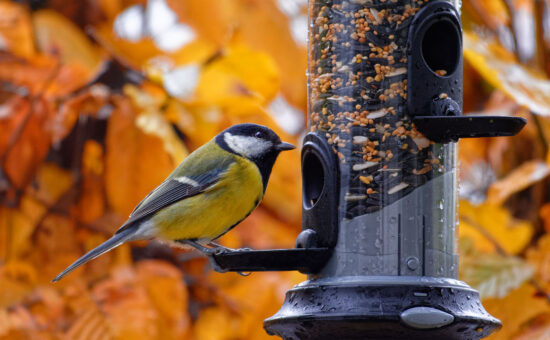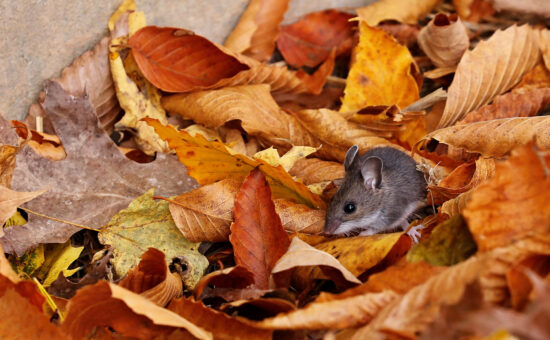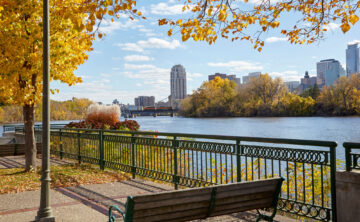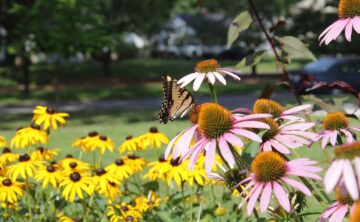Creating a Balanced Backyard:
Feed the Birds, Deter the Rest
October 2, 2025
October in the Twin Cities is a season of change. As leaves fall and temperatures drop, backyard wildlife activity picks up. Migrating birds stop by for food and rest, while other animals like rodents and overwintering insects begin searching for shelter. With a few smart strategies, you can create a backyard that welcomes birds while keeping pests from calling your house home.

Welcoming the Birds
Minnesota’s fall migration brings a variety of birds through the region, including warblers, sparrows, and finches. These species rely on backyard habitats for food and water during their journey.
To support them:
- Refill feeders with high-energy options like sunflower seeds or suet (a fatty, protein-rich food birds love).
- Provide clean water in birdbaths or shallow dishes.
- Plant native shrubs and perennials like dogwood and coneflowers for berries and seeds.
- Leave some leaf litter in garden beds to support insect populations, an important food source for birds.
Creating layers of vegetation from ground cover to canopy helps birds feel safe and encourages them to linger.

Deterring Unwanted Guests
While birds are welcome, fall also brings increased activity from rodents, raccoons, and insects. These pests are often drawn to the same food and shelter sources you’ve provided for birds.
To discourage them:
- Keep feeders tidy and avoid spilling seeds.
- Use squirrel-proof feeders and baffles to limit access.
- Secure compost bins and trash cans to prevent scavenging.
- Seal cracks and gaps around your home to block entry points.
- Store pet food and birdseed indoors in sealed containers.
Being proactive now helps prevent pest problems later in the season.

Designing for Balance
A balanced backyard supports birds while keeping pests in check, and it starts with smart design. Native plants like dogwood and coneflowers offer natural food sources, while open lawn areas provide space for ground-feeding birds.
Place feeders away from dense vegetation and structures to discourage rodents and keep water sources clean to prevent mosquito breeding. Fall is also the time to tidy up. Prune dead branches, remove excess leaf litter, and inspect garden beds for signs of overwintering pests.
When needed, professional pest management solutions can help maintain a healthy landscape without disrupting the wildlife you want to welcome.
A backyard in balance is a backyard in harmony. By feeding the birds and deterring the rest, you’re not only protecting your space, but you’re also contributing to a healthier, more resilient Twin Cities ecosystem.
Want help preparing your landscape for fall and winter?
Contact our team to schedule a seasonal consultation and keep your yard thriving through the colder months.
Other items you may be interested in:

The Science of Fall Foliage
How Seasonal Changes Impact Our Local Ecosystem. Discover why leaves change color and what this season of transition means for Minnesota’s entire ecosystem.

Caring for Your World
Rainbow understands that your property is more than just a collection of trees, lawns, and structures. It’s a living ecosystem uniquely connected to your life.

Your Yard, the Ultimate Ecosystem
A balanced landscape doesn’t happen by accident. It’s the result of intentional care where trees, turf, and even pest management work together.
